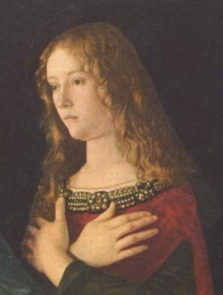There is a mystery behind this cry of Jesus from the Cross that we have not been able to penetrate. It is almost impossible to imagine Jesus utterly forsaken by God. We ask – how could it be? Jesus, always so sure of the presence of his Father God, how could it be that he should feel so abandoned by Him, just at the moment he needed Him most? In the course of my ministry I have watched people die and sometimes not without considerable suffering. There has been on their faces a light and a peace that spoke more eloquently than any words of assurance promising that God does not forsake us even as we draw our last breath; that He may be closer to us in death than we have been aware of him in life.
We are surprised and puzzled by those words of dereliction that reach out from the Cross. Very difficult to explain. So difficult some people say those words could never have crossed the lips of Jesus, that the writer of the Gospel, to make the quotation from Psalm 22 more palatable, has deliberately inserted it in the editing of the Gospel with the intent of giving it a more dramatic ring to impress upon the reader and listener how much was the cost of our salvation to Jesus. In one early manuscript, for example, the words are altered and read Why hast thou taunted me? The explanation for this change is that the copyist took offence at the words of the orthodox translation and edited it for what he considered a more appropriate utterance. There are biblical scholars who solve the problem with the theory that, since it is impossible to think of Jesus being left in the lurch by his Father God, the quotation from Psalm 22, this cry of dereliction, was appended to the story of the Cross by the Gospel writers to underpin the sentiment encapsulated in the words of a well-known hymn: what pains He had to bear and it was for us He hung and suffered there. Well, maybe to quote from the same hymn – we may not know, we cannot tell.
You knew something was troubling my old landlady when you heard her quietly reciting the words of Psalm 23 – The Lord’s my Shepherd, a favourite passage of Scripture for her because, she explained to me, of its soothing and assuring effect, it lifted her up! Perhaps Jesus was similarly reciting the Psalm to ease the pain, the agony of it all. Who knows? Dr Vincent Taylor, Principal of Wesley College when I was a student, presented the evidence for and against the authenticity of this saying of Jesus, and said: It is improbable that tradition would have assigned to Jesus such a saying, except under warrant of past testimony. What he is saying is that, for a moment or two, as He hung on the Cross, Jesus did have a feeling of being abandoned, not only by His nation and His friends, but even by His Heavenly Father.
![Carl Heinrich Bloch [Public domain], via Wikimedia Commons](https://mitchellcalled.files.wordpress.com/2015/03/christ_at_the_cross_-_cristo_en_la_cruz.jpg?w=625)




